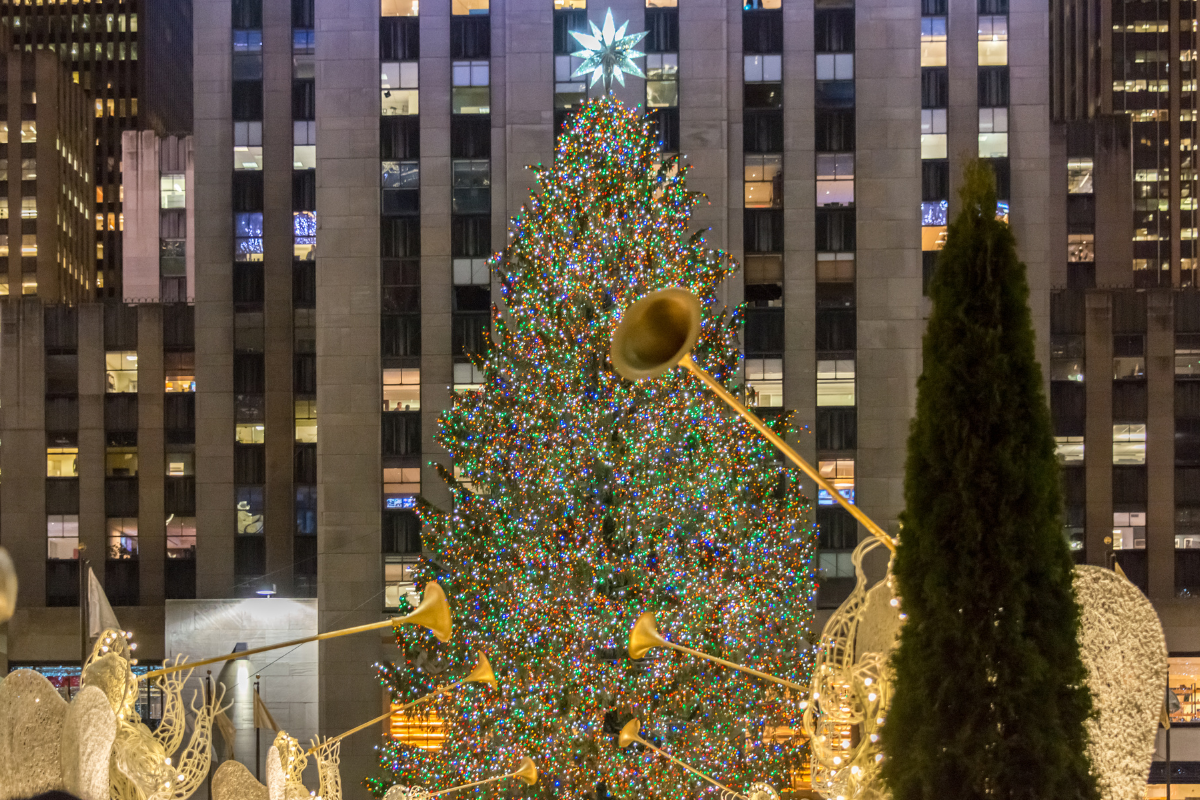 Image by Fotostorm
Image by Fotostorm
Origins of the Christmas Tree Tradition
To truly understand the rich history of the Christmas tree, we must go back in time to explore its origins and how it became such an integral part of the holiday season. The tradition of decorating trees during winter dates back to ancient civilizations, such as the Egyptians and Romans, who adorned their homes and temples with evergreen branches to celebrate the winter solstice.
However, the custom of bringing an entire tree indoors and decorating it in a festive manner can be traced back to 16th-century Germany. It is believed that Martin Luther, the Protestant reformer, was the first to introduce the concept of the Christmas tree as we know it today. Legend has it that while walking through a forest one winter's night, Luther was captivated by the twinkling stars shining through the evergreens. Inspired by the scene, he cut down a small tree, brought it home, and adorned its branches with candles to recreate the magical display he had witnessed. From there, the tradition spread throughout Germany and eventually made its way to other parts of Europe and the world.
 Image of Queen Victoria, Prince Albert, and their family at Christmas. Unknown engraver/ http://www.webstermuseum.org/christmas.php/Public Domain
Image of Queen Victoria, Prince Albert, and their family at Christmas. Unknown engraver/ http://www.webstermuseum.org/christmas.php/Public Domain
Evolution of the Christmas Tree in Different Cultures
As the tradition of the Christmas tree spread throughout Europe and the world, different cultures began to adapt and incorporate their own unique customs and symbols into the festivities. In this section, we will explore how the Christmas tree evolved in various countries and the traditions associated with it.
One notable example is the United Kingdom, where the Christmas tree became popular during the Victorian era. Queen Victoria and her German husband, Prince Albert, were known for their love of Christmas and introduced many German traditions to the British royal family. The Christmas tree quickly gained popularity among the English aristocracy and eventually became a common sight in households across the country.
In the United States, the Christmas tree tradition was brought by German immigrants in the 18th and 19th centuries. Similarly, in the UK, the trend was popularized by the influence of the royal family. In 1848, an illustration of Queen Victoria and Prince Albert standing around a Christmas tree was published in a popular U.S. magazine, solidifying the tree's place in American holiday celebrations.
In other parts of Europe and the world, the Christmas tree has also taken on unique characteristics. For example, in Italy, it is common to see nativity scenes placed under the tree, representing the birth of Jesus. In Mexico, trees are often decorated with colorful paper ornaments and surrounded by poinsettias, which are native to the region. The evolution of the Christmas tree in different cultures is a testament to the enduring appeal of this beloved holiday symbol.
Symbolism and Significance of the Christmas Tree
Let’s explore the symbolism and significance behind the Christmas tree. Throughout history, the Christmas tree has represented various meanings and has served as a powerful symbol of joy, hope, and renewal.
One of the most common interpretations of the Christmas tree is its representation of everlasting life. The evergreen nature of the tree, with its lush green foliage even during winter, symbolizes the promise of life continuing even in the darkest times. The lights and ornaments adorning the tree also represent the light of Christ, bringing hope and joy into our lives.
The Christmas tree is also a symbol of family and togetherness. It serves as a focal point for gathering and celebrating during the holiday season. Decorating the tree with loved ones has become a cherished tradition for many, creating memories that last a lifetime.
Furthermore, the Christmas tree holds religious significance for Christians. It is a tangible representation of the tree of life mentioned in the Bible, particularly in the story of Adam and Eve. The tree reminds believers of their faith and the message of salvation brought by Jesus Christ.
Famous Christmas Trees Around the World
In this section, we will take a closer look at some of the most famous Christmas trees around the world. These iconic trees have become symbols of holiday cheer and attract visitors from near and far.
One of the most well-known Christmas trees is the Rockefeller Center Christmas Tree in New York City. This towering evergreen, adorned with thousands of twinkling lights, has been a holiday tradition since 1931. Each year, the lighting ceremony draws crowds of spectators and is televised nationally, bringing the joy and magic of Christmas to millions of viewers.
 Christmas Tree at Rockefeller Center Image by Elnur
Christmas Tree at Rockefeller Center Image by Elnur
In London, the Trafalgar Square Christmas tree holds special significance. This tree is a gift from the people of Norway to the people of Britain, in gratitude for their support and friendship during World War II. The tree is a symbol of peace and unity, and its annual lighting ceremony is a cherished tradition in the city.
 Christmas at Trafalgar Square, London. Image by Alexey Fedoren
Christmas at Trafalgar Square, London. Image by Alexey Fedoren
Another notable Christmas tree is found in Rio de Janeiro, Brazil. Known as the Rio de Janeiro Floating Christmas Tree, it is one of the largest floating Christmas trees in the world. Towering at a height of around 278 feet, this magnificent tree is constructed on the Rodrigo de Freitas Lagoon and lights up the city's skyline with a dazzling display. These are just a few examples of the famous Christmas trees that bring joy and wonder to people all around the world.
 Christmas tree floating in Rodrigo de Freitas Lagoon, Rio de Janeiro. Image by André Moreira
Christmas tree floating in Rodrigo de Freitas Lagoon, Rio de Janeiro. Image by André Moreira
Traditions and Customs Associated with the Christmas Tree
As we continue our exploration of the rich history of the Christmas tree, let's delve into the many traditions and customs associated with this beloved holiday symbol.
One of the most popular traditions is decorating the Christmas tree. Families everywhere come together to adorn their trees with beautiful ornaments, lights, and garlands. Whether it's colorful glass baubles, handmade crafts, or cherished heirlooms, each ornament holds a special meaning and adds a personal touch to the tree.
Another common custom is placing a star or an angel at the top of the Christmas tree. The star is often seen as a representation of the Star of Bethlehem, guiding the Three Wise Men to baby Jesus. The angel, on the other hand, symbolizes the angels who announced the birth of Jesus to the shepherds.
 Image by Africa Images
Image by Africa Images
In addition to decorations, many families also exchange gifts beneath the Christmas tree. The presence of gifts adds a sense of excitement and anticipation to the holiday season. Children eagerly await the moment they can open their presents, while adults cherish the opportunity to spread joy and love through thoughtful gifts. The tradition of the Christmas tree has deep historical roots, and its significance varies from culture to culture.
Preservation and Conservation of Christmas Tree Traditions
Despite the ever-changing nature of our world, the preservation and conservation of Christmas tree traditions remain a driving force in many societies. As the years go by, more and more efforts are being made to ensure that these cherished customs are not lost to the passage of time.
One way in which the preservation of Christmas tree traditions is being upheld is through the passing down of knowledge from one generation to the next. Through stories and personal anecdotes, families keep the spirit and significance of the Christmas tree alive. This act of sharing traditions not only strengthens family bonds but also safeguards the cultural heritage associated with the holiday season.
In addition, numerous organizations and communities around the world are dedicated to the conservation of Christmas tree customs. They strive to raise awareness about the historical importance of these traditions and work to safeguard them for future generations. These groups often organize events, exhibitions, and educational programs to shed light on the history and impact of the Christmas tree.
Moreover, the increasing focus on sustainability and environmental protection has prompted the development of eco-friendly Christmas tree practices. Many individuals now opt for artificial trees made from recycled materials, ensuring a minimal impact on the environment. Additionally, some communities have implemented programs that encourage the replanting and preservation of real trees, promoting a sustainable approach to Christmas tree celebrations.
 Image by Piksel
Image by Piksel
By actively participating in the preservation and conservation of these beloved traditions, we honor the legacy of our ancestors and create a lasting connection between the past and the present. As we continue our journey through the rich history of the Christmas tree, let's embrace the importance of upholding these customs and ensure that they continue to brighten our holiday seasons for generations to come.
Embracing the rich history of the Christmas Tree
In conclusion, the rich history of the Christmas tree is a testament to the enduring traditions that have been passed down through generations. It becomes evident that the preservation and conservation of Christmas tree customs are crucial to maintaining our cultural heritage.
Through the sharing of stories within families and the efforts of organizations and communities, we can ensure that these traditions remain a vibrant part of our holiday celebrations. Moreover, the growing focus on sustainability has spurred the development of eco-friendly practices, allowing us to enjoy the beauty of Christmas trees while minimizing our impact on the environment.

